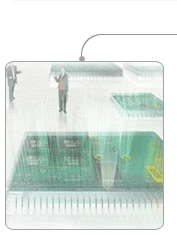Diploma in Embedded Systems Design

Realizing the growth of embedded systems in day-to-day life and the need for trained manpower in this promising area, C-DAC has launched a Diploma in Embedded Systems Design (DESD) for Engineers in computers, electronics and IT. Embedded Systems is a unique field, where engineers need to have sound knowledge in hardware and software design. Keeping this aspect in view, C-DAC has designed the diploma giving equal emphasis to hardware and software, enabling engineers to face challenges in the design and development of state-of-the-art embedded systems. The latest curriculum includes a module on wireless embedded systems design, specifically focusing on wireless technologies and Wireless Sensor Networks (WSN).
Course Structure
Diploma in Embedded Systems Design (DESD) is a five-month full-time course consisting of six modules, an industry relevant project and a seminar. Daily sessions comprise two hours of lecture followed by four hours of lab work.
Click here to view DESD Course Syllabus
Eligibility
Engineering Degree in Electronics / Electrical / Electronics & Communication / Electronics & Instrumentation / Computer Science & Engineering / Computer Engineering / Information Technology or M.Sc Electronics / Instrumentation with first class in the final degree.
Prerequisite
All applicants should possess sound knowledge of Electronic Circuits, Analog & Digital Design, Microprocessors, Computer Architecture, C Programming & Data Structures, Basics of Data Communication & Networking and Concepts of Operating Systems. It is important that the applicants possess good aptitude and communication skills.









